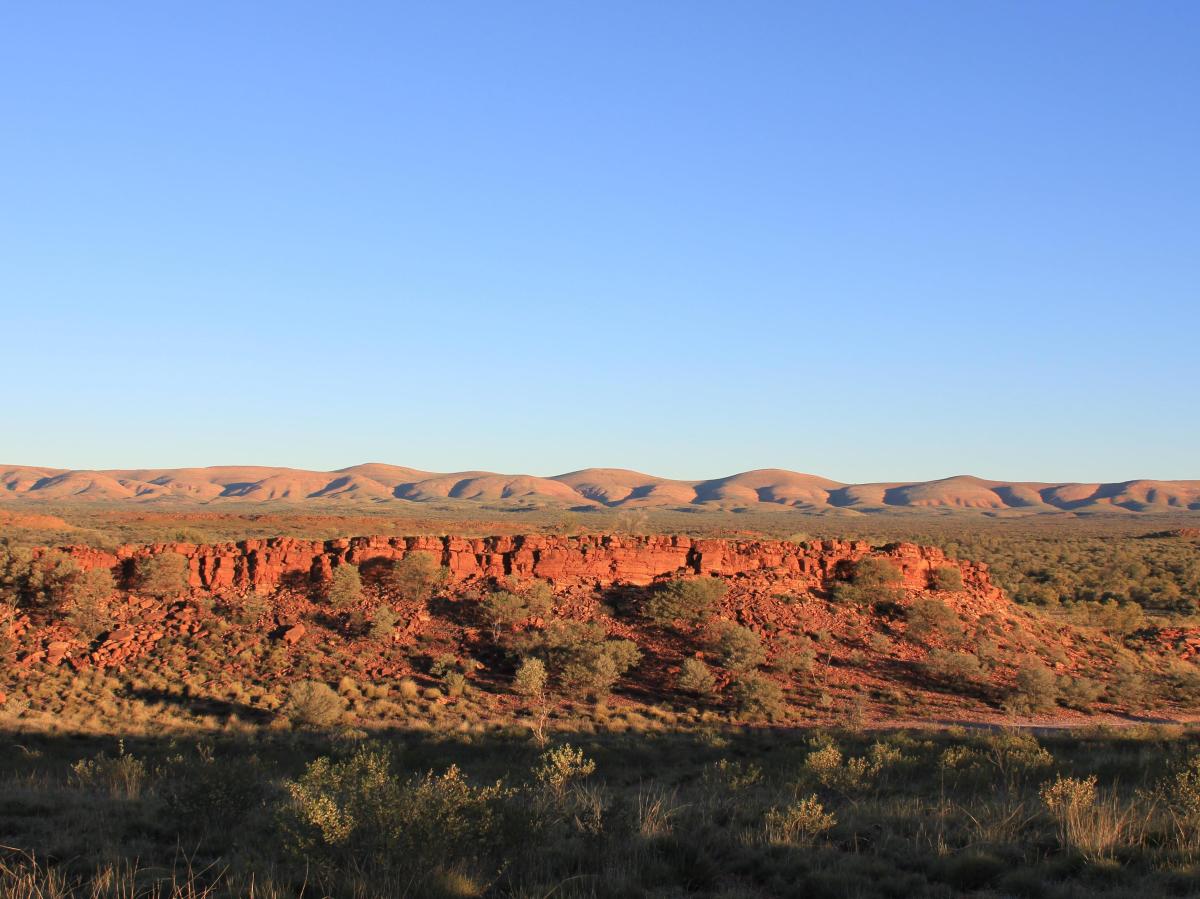Image courtesy of Ikuntji Artists.
Ikuntji Artists is located within the West MacDonnell Ranges, NT a diverse landscape ranging from mountains to red sand hills and stands of desert oak trees.
Art from this region is particularly famous for the use of bold and vibrant colours along with abstract paintings.
Ikuntji, Haasts Bluff’s Indigenous art centre is owned and run by the Luritja people. It was established in 1992, after a series of workshops with Melbourne artist Marina Strocchi.
Then community president, the late Esther Jugadai, was a key figure in establishing the centre, which was initially set up as a women’s centre providing social services including aged care and activities for children. In 2005, the women’s centre was changed to an art centre with the incorporation of the art centre as Ikuntji Artists Aboriginal Corporation.
Art Centre Manager Dr Chrischona Schmidt said that the artists’ work is distinctive for their link to their ancestors and cultural ties to their land, drawing inspiration from their personal Ngurra (country) and Tjukurrpa (dreaming).
‘There is a long history of painting in this area and some artists have family connections with artists from Papunya and Kintore as well as from Hermannsburg, representing two major genealogies of art-making in the western desert: landscape painting and abstract painting ,’ said Dr Schmidt.
Ikuntji Artists has eight key artists, who exhibit in Australia and internationally and are represented in major collections across the globe. An exhibition of Ikuntji artists is currently showing in Brussels in Belgium.
While interpreting ancestral stories using traditional symbols, icons and motifs, the artistic style of Ikuntji Artists is diverse including a range of mediums and creating contemporary works.
‘I think that Aboriginal art that is very contemporary- and can’t just be put into the box of touristy dot painting- has a lot to say, especially fine contemporary art,’ said Dr Schmidt.
Ikuntji Artists has a board of seven Indigenous directors all of whom live and work locally. Since 1992, the art centre has seen three generations of artists working in the centre with more young people becoming involved, along will Aboriginal elders.
For more information visit Ikuntji Artists.





